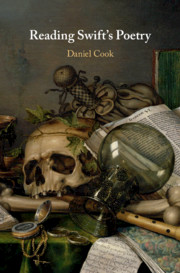Chapter 6 - Swift’s Remains
Published online by Cambridge University Press: 10 August 2020
Summary
In the 1730s Swift produced his most controversial poems (‘The Lady’s Dressing Room’, ‘A Beautiful Young Nymph Going to Bed’, ‘Strephon and Chloe’, and ‘Cassinus and Peter’). Often read as discomfiting scatological poems, these works have been grouped together as 'the unprintables', proof (some critics argue) of an increasingly depraved mind. My new interpretation treats the works in the context of Swift’s career-long fascination with the materiality of poetry. In the unprintables Swift messily mingles the conventions of ancient and Renaissance love poetry in an exposé of what he perceives to be the limitations of form itself. This chapter also places Swift’s most famous poem, 'Verses on the Death of Dr Swift', alongside his other self-portraits written between 1731 and 1733, including political satires and metapoems alike, from verse libels on Delany to 'On Poetry: A Rapsody' and ‘The Legion Club’. Odes, epistles, fables, ballads, verse libels, political satires, descriptive and narrative verses, imitations, auto-eulogies, elegies, rhapsodies, anti-erotica, peeping-tom poems, metapoems, and more: to the end, Swift kept reinventing himself and the poetry and poets around him.
- Type
- Chapter
- Information
- Reading Swift's Poetry , pp. 225 - 286Publisher: Cambridge University PressPrint publication year: 2020



